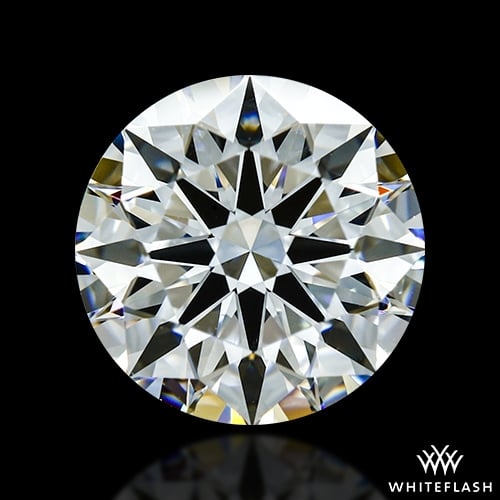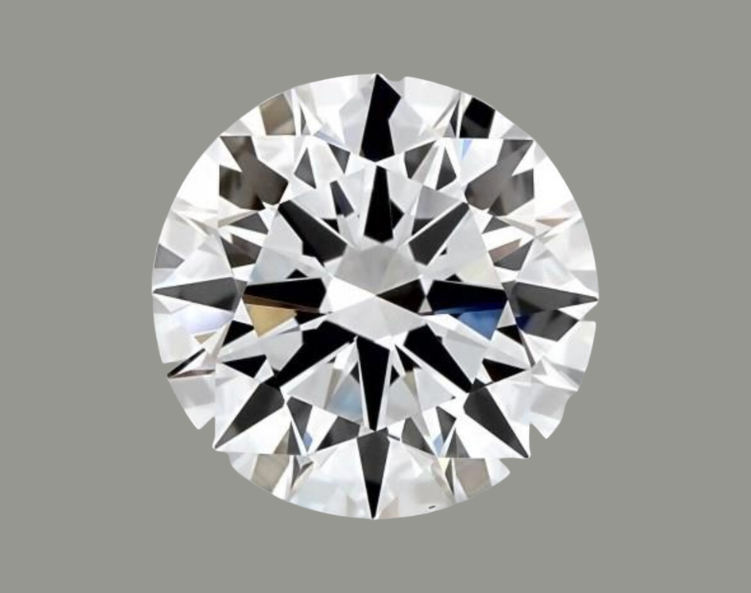Recently, consumers are increasingly opting for lab-grown diamonds over mined diamonds for several compelling reasons. Lab-grown diamonds offer sustainability, affordability, and the assurance of known sourcing. These diamonds are indistinguishable from their mined counterparts, exhibiting the same optical, physical, and chemical properties that enable them to test as diamonds when subjected to a diamond tester. Lab-grown diamonds often come with a lower price tag, making them very attractive to the diamond connoisseur that is not an earth-mined diamond purist. How are they made, though? Stay with us to find out!
Two methods are currently being used to grow lab-grown diamonds: High Pressure, High Temperature (HPHT) and Chemical Vapor Deposition (CVD). Some of the diamond grading labs have begun to denote which method was used when certifying lab-grown diamonds.
Shop Lab-Grown Diamonds: PriceScope is your trusted source for lab-grown diamonds, offering a diverse range of lab-grown diamonds from trusted vendors Whiteflash, James Allen, and Blue Nile at competitive prices. Experience the beauty of sustainable luxury from our trusted vendors, ethically sourced, lab-grown diamonds.
High-Pressure, High-Temperature (HPHT) Lab-Grown Diamond Production
Developed in the 1950s, HPHT was the first method developed to create lab-grown diamonds. By mimicking the pressure and temperature conditions that would form a diamond in the earth, while it takes earth-mined diamonds billions of years to grow into the diamonds that we know and love, a lab-grown can form in a matter of weeks.
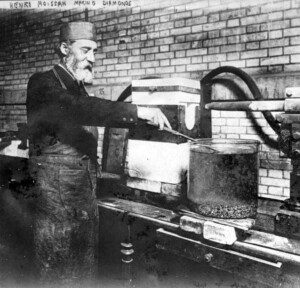
Three basic techniques are used to manufacture HTHP lab-grown diamonds; The belt press, the split beer (BARS) press, and the cubic press. A small diamond “seed” surrounded by carbon is entered into the controlled environment in each method. Temperatures exceeding 2,000 degrees Fahrenheit and pressures of about 1.5 million PSI cause the carbon to melt and crystallize around the seed, forming a diamond. The diamond is then cooled to complete the formation process. When the carbon has melted away, what remains is a full-sized diamond. This method can also be used to potentially enlarge or enhance earth-mined diamonds.
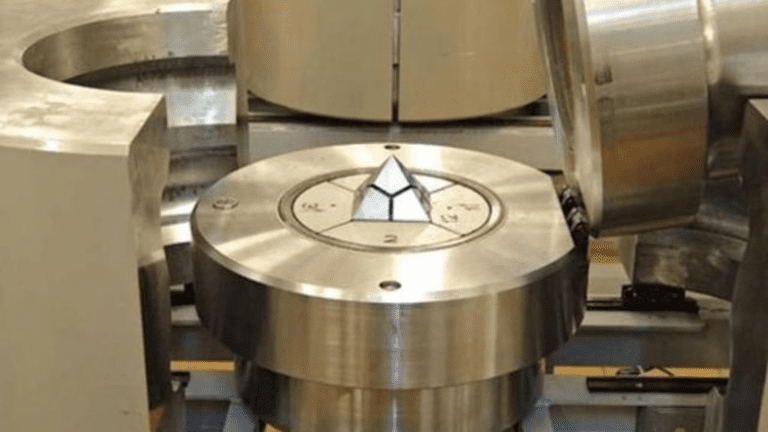
HPHT Lab-Created Diamonds
Identifying HPHT Lab-Grown Diamonds
Rough HPHT diamonds exhibit distinctive characteristics compared to rough CVD diamonds. HPHT diamonds tend to have a yellowish hue due to nitrogen exposure during their growth. They also tend to contain darker metallic inclusions, which can help identify them as lab-grown since naturally formed diamonds rarely capture metals during their formation. These metallic inclusions in HPHT diamonds can render them magnetic, offering another means of distinguishing lab-grown diamonds, as natural diamonds are not magnetic. A study conducted in 2012 revealed that over half of the tested HPHT diamonds exhibited a detectable magnetic response.
The most reliable method to identify an HPHT diamond is by examining its grading report. Lab diamond grading reports will indicate if the diamond was grown using the HPHT method or the CVD method. Additionally, some HPHT diamonds may display a blue nuance, resulting from exposure to boron during the growth process. Notably, fancy blue diamonds are the outcome of increased boron during their formation. However, it is essential to note that not all HPHT diamonds exhibit this blue tint. While using a magnet on the diamond may reveal magnetic properties in some HPHT diamonds, it is not always a definitive indicator since not all HPHT diamonds contain enough metallic inclusions to react to a magnet.
Lab-Grown Diamonds Education: Interested in understanding more about the fascinating process of creating lab-grown diamonds? PriceScope offers detailed insights into the world of diamonds, ensuring you make an informed decision. Explore our educational guides today and become a diamond connoisseur yourself.
Chemical Vapor Disposition (CVD) Lab-Grown Diamond Production
CVD is a more recent development, having been discovered in the 1980s. This method uses less energy to create a diamond than HPHT and is generally less expensive. Rather than reproducing the environment that creates diamonds within the earth, CVD recreates a closer environment to what naturally occurs in interstellar gas clouds.
The process begins with a tiny diamond seed, which undergoes a carefully controlled heating process inside a vacuum sealed container. This heating brings the temperature to approximately 800 degrees Celsius. Once the container is filled with carbon-rich gases, including methane, advanced techniques, such as microwaves and lasers, are employed to ionize the gases, transforming them into plasma. Through this ionization process, the carbon molecules can merge with the diamond seed, facilitating the growth of the diamond layer by layer. This intricate and precise method ensures the gradual formation of a stunning diamond with exceptional clarity and quality.
CVD-grown diamonds belong to the Type IIA category, exceptionally rare in naturally occurring diamonds. This distinction aids in differentiating between lab-grown and naturally formed diamonds. Type IIA diamonds are so chemically pure that the purity is actually a marker that it is more likely lab-grown. CVD diamonds are not magnetic as a result of their chemical purity, they do not have metallic impurities.
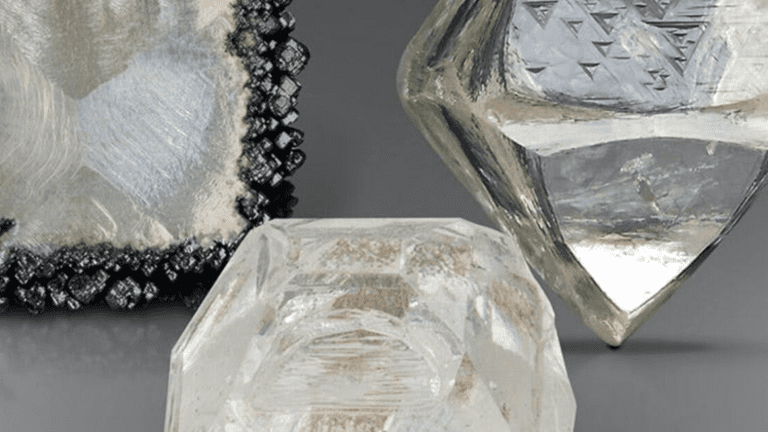
CVD Lab-Created Diamonds
Identifying CVD Lab-Grown Diamonds
You cannot identify a CVD lab-grown diamond with the naked eye. The best way to determine if a diamond is CVD produced is via a reputable lab diamond grading certificate. There have been reports of “strain lines” in a small number of CVD created diamonds, but these are also not visible without using a loupe.
Under UV light, CVD diamonds sometimes show a colored fluorescence. Getting a diamond with low or no fluorescence will ensure that this does not occur.
Lab-Grown Diamonds at PriceScope
Final Thoughts
The human eye is not enough to differentiate between these lab-grown diamond creation methods. The result will be a gorgeous, sparkling diamond that is chemically, optically, and physically identical to earth-mined diamonds. Lab-grown diamonds are not synthetic, they are real diamonds.
Join Our Community: Intrigued by the world of diamonds and want to learn more? PriceScope's bustling forum is home to experts, enthusiasts, and buyers like you. Join the conversation today and make your lab-grown diamond buying process even more informed.

